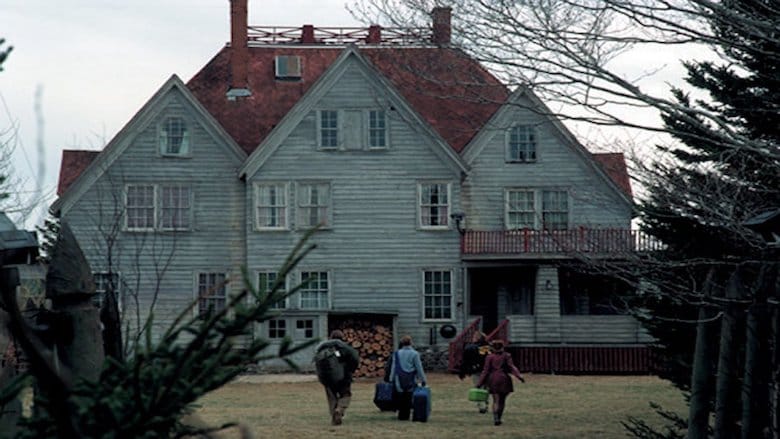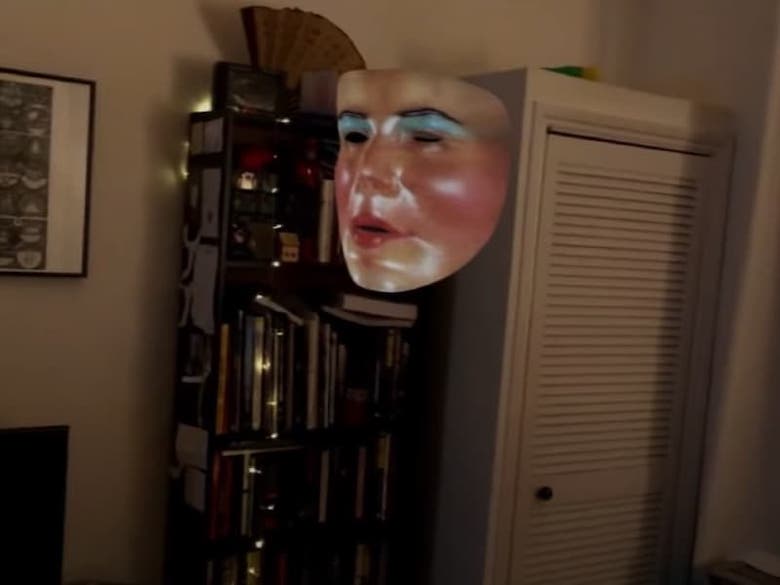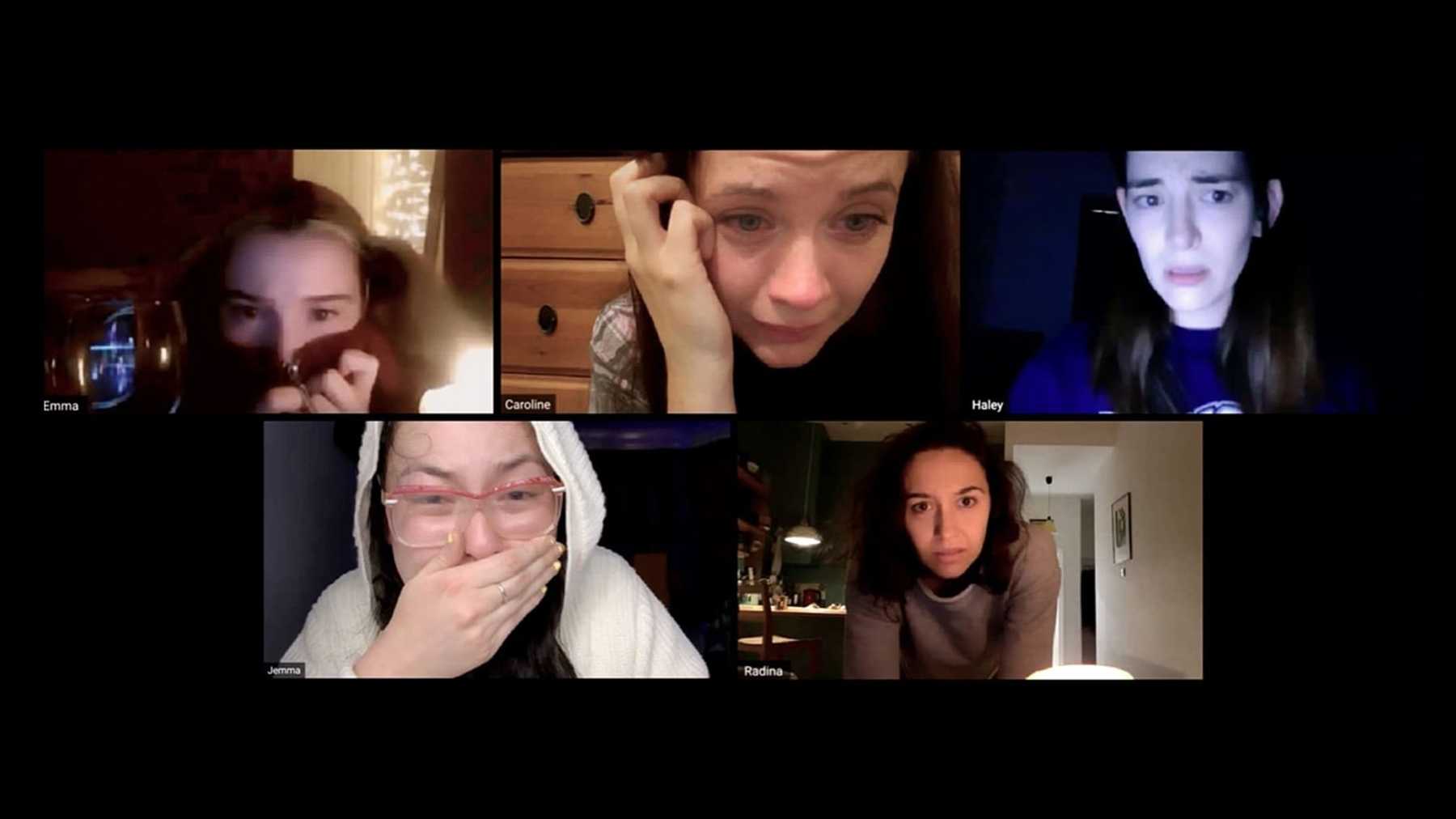No one needs to be convinced that a vast majority of our daily time is spent watching a screen. They are omnipresent in our daily lives, from the tablet that the kids use to relax after their school duties, to the meetings in Zoom/Google Meet/Skype/etc that their home working mom and dad are chained to (“slave to the wage” has become “slave to the screen”).
And most of that screen time is of course spent on the world wide web. While writing this article for example (in a Google Doc), I also regularly check my multiple inboxes, my social media feeds, Google results about horror, and glance once in a while at some other NSFW content. I pride myself to procrastinate in different and interesting ways.
Now, if horror is a metaphoric genre that deals with issues of its current time, then it is only logical for there to be horror about smartphones, browsers, apps and Snapchats. Let’s have a look and dissect the subgenre of the “Internet Horror Movie,” shall we?
Internet Horror Movie Themes
“Internet Horror” is a very broad subject that encompasses many films with several recurring motives. Issues of privacy and surveillance are a popular theme for example, and this is often combined with snuff films or to be more precise: snuff websites. Films like My Little Eye and Feardotcom are an excellent example of this.
In My Little Eye five people take part in a reality show, which is streamed live on the internet. They are able to win a large cash prize if they stay for 6 months in a house completely rigged with cameras and microphones. If anyone leaves, no one gets the money. And while the participants think they are featured in a big brother style online tv show, they are in fact part of something quite more sinister. The livestream is in fact a snuff website, where viewers can place bets on who will die first.

What’s particularly interesting is that all the shots featured in the film are from the cameras inside the house. The movie we see is like a multi-camera live feed, with an invisible director somewhere who switches from one camera to the next, hoping to please his snuff loving audience. This makes My Little Eye a very interesting and smart horror film, with excellent scares and a bleak ending.
Another theme of internet horror movies concerns the combination of the old with the new. Thanks to ‘new’ technology (for example photography, video recording, internet, the dark web, smartphones, apps, virtual reality, augmented reality) something old is given a new chance to appear. The internet is seen here as a void that can be used by ghosts or demons to manifest themselves.
Countdown was a recent horror film that uses that trope, where a demon called Ohzin uses an app to find his victims. We live in demanding times where demons now have to be versed in app development – both android and iOS.
Or consider this prose example: the book Gods of the Dark Web from author Lucas Mangum. Let me quote a review to summarize the story: “An eldritch Lovecraftian god and a cult of depraved followers that find victims using the dark web. Gods of the Dark Web is a short, mean and brutal story about the horrors of the dark web and the vile things that may take place there.” If this sounds like your cup of tea (it is mine!), check it out!
Perhaps the most excellent movie to illustrate this theme is the J-horror Kairo or Pulse. It is one of the highlights of the J-horror times, featuring some very creepy and disturbing scenes. It was also remade for an American audience in 2006.
But in this article we will focus on a specific subgenre of Internet Horror Movies: the desktop film or computer screen film.
Computer Screen Horror: Unfriended and Host
The big breakout film in this genre was Unfriended from 2014. It tells the story of main character Blaire who meets online with her boyfriend Mitch and friends Jess, Ken and Adam. Suddenly there is a stranger also present in their Skype conversation: check out that fragment here.
The intruder pretends to be one of their classmates, Laura, who committed suicide one year ago because she was cyberbullied. Who is pretending to be Laura? Or is it Laura’s ghost who has come back for vengeance (cue music: dum dum da dummmm)?
Unfriended popularized a new kind of filmmaking: the desktop film. The events of the film take place in real time, and the camera is locked fix at the computer screen while Blaire checks her email, moves her mouse, watches youtube, talks on skype, does a google search, … This is a fascinating experiment in storytelling, narrative and cinematic style. But does it work? Is it interesting, scary, fascinating? In short: yes! The story of Unfriended seems to be more of an excuse or ‘a necessary evil’ to be able to fully explore the potential of this new way of storytelling.
The same can be said for that other big desktop film: the (maybe over)hyped Host. The story can be summarized as “online seance gone wrong”. The origin story of Host is quite well known: director Rob Savage did a short prank during a real Zoom conversation with his friends, which went viral.

Rob Savage was contacted by Shudder, who financed a longer expanded version. But because it was made exclusively for a streaming service, there was no requirement for it to be of feature length (Host clocks in at just under an hour at 56 minutes). This is a very stripped down, lean way of storytelling, with a short setup, the introduction of the medium, the seance gone wrong and consequently one supernatural murder set piece after the other. This is similar to another previous short from Rob Savage, Salt, which is basically just two set pieces with scares… more aligned to a showreel than a short film. But as a calling card it is certainly successful.
Future of Storytelling?
A big champion of computer screen films is filmmaker Timur Bekmambetov (Night Watch, Abraham Lincoln: Vampire Hunter, Ben-hur). He was the producer of Unfriended and has since produced several other desktop films: the thrillers Searching and Profile.
He has dubbed this style of filmmaking screenlife, and has built an interesting online platform to share his knowledge. This includes articles on its history, software and tools, tips and trick… For Bekmambetov screenlife is “a storytelling format in which all the action takes place on the screens of the heroes” smartphones or computers.
— FOUNDATIONS OF HORROR —
Further explore these subgenres & tropes. more>>
#Meta horror

Screenlife is a new cinematic language, a truly modern way to reveal the inner state of the hero on the screen. Screenlife is a window into the inner world of the hero, destroying the fourth wall between spectacle and spectator and radically changing the audience’s understanding of film.” The intimacy and the window into the inner world are very fascinating here, and I don’t think Bekmambetov is exaggerating here. Looking at someone browsing- or search engine history is about as intimate as it can get.
He goes on to conclude that “Screenlife is terra incognita, every movement and event in this territory is unique, and we invite you to join us in making new discoveries about it.” It is clear thet he is planning on way more desktop films, in a vast array of genres: horror and thrillers, but also comedy and romance.
The Screen is here to stay.
A List of Internet Horror Movies
Host (2020)
Unfriended (2014)
Pulse (2001)
Feardotcom (2002)
My Little Eye (2002)
Countdown (2019)
Searching (2018)
#Horror (2015)
Tragedy Girls (2017)
Cam (2018)
Last Updated on June 30, 2021.


2 Comments